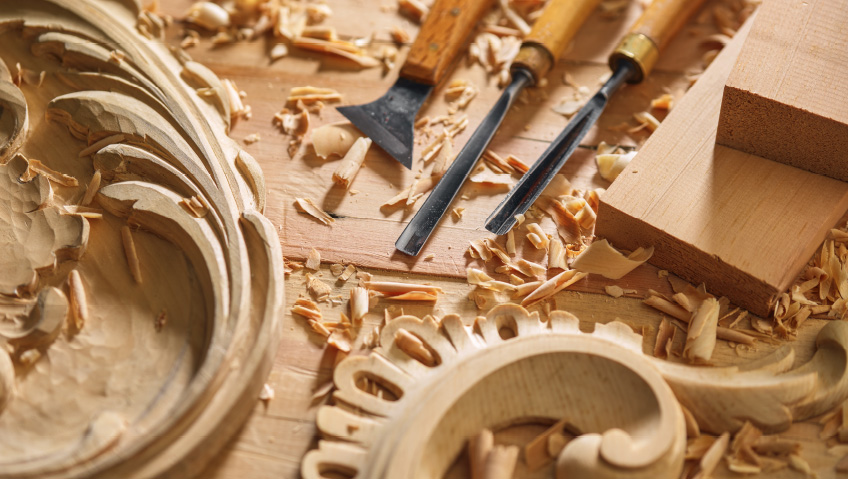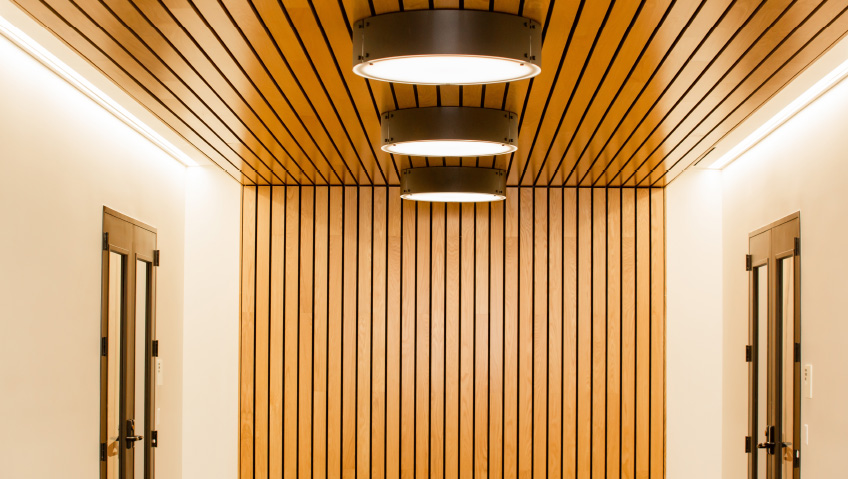Following what feels like decades of minimalism dominating the design zeitgeist, the apparent return of custom cabinetry is a welcome breath of fresh air. And the icing on the cake is that several trades, especially the millwork industry, stand to gain significantly from this new design era.
As layered architectural textures are embraced with a renewed appreciation of the nostalgic and handmade, combined with a growing demand for natural textures from renewable sources, everything from floors and cabinets to walls and ceilings is undergoing a style transformation that leans toward intricacy and craftsmanship. For millwork—wood products crafted in a mill—this is an interesting direction for design to take, following decades of often stark, polished lines in wood and molded design elements.
There could be several reasons for this unexpected mixture of nostalgia and authenticity in interior design lately. From a philosophical perspective, the world seems to have grown tired of cookie-cutter styles that provide a picture-perfect illusion of luxury but are devoid of true comfort and soul. As the Japanese concept of embracing the imperfect and unfinished through what it refers to as “wabi-sabi” sets down roots in greater Western thought, design appears to be inching its way into the past, reflecting on times when the awareness of the exquisite fragility of life was more prominent in our collective consciousness.
From a style perspective, this is great news for milling companies as designers are replicating everything from neo-classical pillar details on bookcases to wall paneling and moldings ranging from Victorian-era textures to mid-century chic and beyond. The only rule appears to be that whoever lives in these richly adorned spaces filled with warm textures, unapologetic color, and ample evidence of lives well lived should love it. Within this context, one would be forgiven for pointing out that it has certainly been a very long time since design has experienced such a wholesale period of fun and eclectic abandon.
For custom milling operations, a healthy challenge awaits, with carved details being back in vogue and 1970s color schemes also making a comeback. This, alongside bright and quirky dopamine decor, writes Julia Cancilla for Elle Decor, may well result in seeing beige in all its shades make way for bolder hues on millwork and molding. That said, natural tones remain a classic choice for those who find their spirits at ease in more sophisticated surroundings, according to Architectural Digest.
“It’s like what’s old is new again,” Cassandra Leisz, Senior Creative Director at Ruggable, said in an interview discussing a collaboration between the magazine and the popular North American rug fabricator. Architectural Digest’s Global Interiors and Garden Director, Alison Levasseur, confirms, “[This latest rug collection is] evocative of bygone glamour, but fashion forward.” Based on the interior fashion leaders’ summary of current design styles in general, the millwork industry now welcomes tremendously innovative times packed with novel and unusual design requests.
Another revival trend that relies heavily on the milling industry is that of the scullery/separate preparation kitchen. With a growing number of families entertaining at home in beautiful kitchens designed to double as comfortable dining areas, having a smaller kitchen on the side can hide the chaos of preparing large and delicious meals. As a result, custom milling outfits will be adapting their offerings to suit customers’ lifestyles and requirements, as these prep spaces are already evolving to include sophisticated storage areas, often with complex cabinetry for hidden pantry features.
Apart from unexpected and genuinely interesting beauty, there are more positives to the current design movement and shift toward maximalism. One is that, with a higher demand for old-world elegance, expertise that may have been lost can now be revived and passed on to younger generations. Another is that historic building renovations are likely to become easier to manage in the future. With younger craftspeople around who now understand the old-fashioned techniques used to create the original woodwork and moldings in such buildings, making such design elements simpler to maintain and preserve should mean losing fewer original interiors in heritage buildings.
Of course, in our day and age, rendering revival millwork with the help of modern technology ultimately simplifies and speeds up the process. To this end, 3D visualization is one technology that goes a long way in helping clients envision their designs before fabrication starts. Modern craftspeople are also finding new ways of incorporating smart technology into their designs. This includes smart cabinets equipped with sensors that report on supply levels and other functions, wireless charging stations, and LED lights fitted inside glass-fronted cabinets, for instance.
Designers are also turning to millwork to help maintain the desired ambience of spaces by hiding technology like televisions, speakers, and even microwaves and other electrical devices that are otherwise visually out of place within a set aesthetic.
With so many historic design trends to explore and the shoulders of giants from the Arts and Crafts movement, the Art Deco tradition, and many other epochs to stand on, modern designers are more than spoiled for choice when it comes to rendering the past in fresh new ways. Naturally, as designers expand their horizons, the millwork and molding industry does so, too. While these two industries find their step within this new world of style, it is certainly going to be exciting to watch the dialectic nature of design and fabrication unfold as one continuously informs and adapts to the other over in the decade to come.






